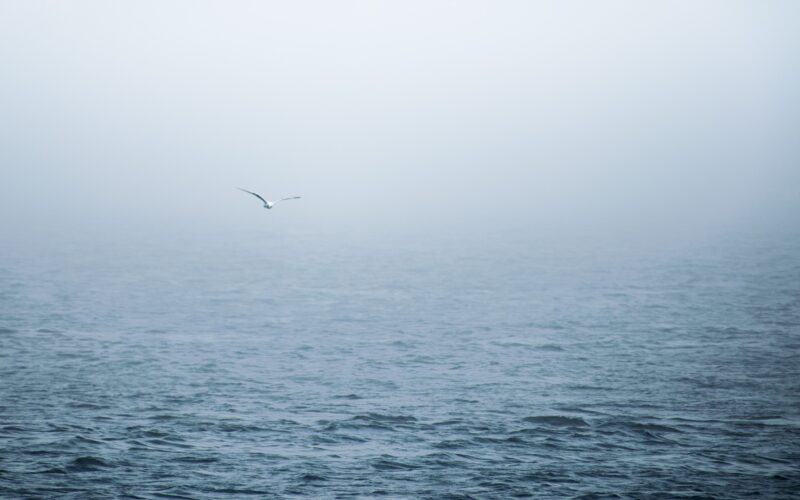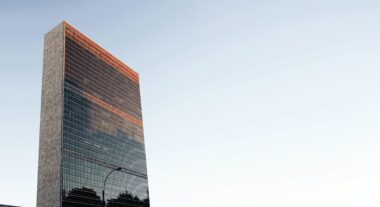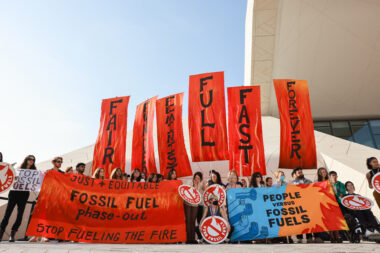The first in a generation UN 2023 Water Conference was held from March 22-24 in New York. With many of the Sustainable Development Goals (SDGs) off track, progress on Goal 6 (water and sanitation) is key to the success of other goals. The aim of the Conference was to raise awareness of our global water crisis and action our internationally agreed upon water-related goals. The main outcome ended with governments, businesses and civil society committing billions of dollars to advance the Water Action Agenda.
What is the UN 2023 Water Conference?
The first UN Water Conference in a generation, co-hosted by Tajikistan and the Netherlands, is an opportunity for Member States all over the world to bring awareness to, and take action on, our water crisis. The last Conference was held in 1977 in Mar del Plata, Argentina.
Billions of people still lack access to safe drinking water, despite being recognised as a human right. Climate change has disrupted the water cycle, causing extreme weather conditions and pollution entering our waterways is destroying ecosystems around the world. Governments now have to move four times faster to meet SDG 6 deadlines by 2030.
2023 UN Water Conference Themes
Supporting the five principles of the SDG 6 Global Acceleration Framework, the Conference covered five themes:
- Water for Health
- Water for Development
- Water for Climate, Resilience and Environment
- Water for Cooperation
- Water Action Decade
1. Water For Health
Two billion people still don’t have access to safe drinking water, with over 700 children under 5 dying from unsafe water every day. Access to safe drinking water and sanitation is critical to global health. Reaching our 2030 goals could save 829,000 lives every year that are currently lost because of unsafe water sources.
2. Water for Sustainable Development
As our global population grows, so do our water needs. Agriculture already uses 69 % of our water and by 2050 we’ll need to produce 60% more food worldwide, 100% more in developing countries. Demand for water is expected to increase by 20-30% by 2050. But demand is growing too fast for natural recharge, leaving more than 1.7 billion people living in depleted river basins and two-thirds of the world expected to live in a water-stressed country by 2025.
3. Water for Climate, Resilience and Environment
Almost three quarters of recent natural disasters are water-related, and likely to increase. Since 2000 alone, floods have increased by 134% and droughts have increased 29%. Not only is this detrimental to the people living in these regions but it also has negative impacts on animal and plant species. Over 85% of our wetlands, considered one of the most biologically diverse ecosystems and breeding grounds for 40% of plant and animal species, have been lost. Limiting global warming to 1.5 degrees is essential to reduce water stress caused by climate change.
4. Water for Cooperation
Globally, transboundary rivers, lakes and aquifers are shared by 153 countries but only 32 countries have adequate operational agreements in place. As climate change increasingly impacts water supplies, water cooperation is crucial for the hundreds of millions that depend on shared resources.
5. Water Action Decade
The Water Action Decade started on World Water Day, 22 March 2018 and runs until World Water Day, 22 March 2028. The aim of the decade is to focus on and progress our sustainable water management goals. From 2016 to 2020, safely managed sanitation services increased by 7% from 47% to 54%. But that still leaves 2.8 billion people without access to safe water. To meet our 2030 goals, we need to increase progress fourfold.
UN 2023 Water Conference Main Outcome
Capturing over 700 commitments to tackle our global water crisis under the Water Action agenda was the main outcome of the UN 2023 Water Conference. The agenda is a united global effort to combat our water challenges in a coordinated and results driven way.
The Water Action Agenda was first launched at the Dushanbe Water Action Decade Conference in 2022. Member States and stakeholders were encouraged to make voluntary commitments in the lead up to the Water Conference this year, continuing until the end of the Water Action Decade in 2028 and the 2030 Agenda.
Canada made 63 commitments related to SDG 6 including safe access to water for Indigenous people in Canada, supporting the ONWA Mother Earth Strategy and wetland restoration.
How You Can Help
Learn
We’re currently off-track to meet Sustainable Development Goal 6, water and sanitation for all by 2030. As a result, billions of people still don’t have access to safe water.
- Read the UN World Water Development Report and understand the challenges around water management globally.
- Learn about your local water supply, where it comes from, how it’s treated and managed.
Act
Reaching our global 2023 goals needs everyone working in the same direction, towards the same unified goals. We can’t rely on someone else to solve the problem or governments around the world to act alone.
World Water Day is inspired by a story from the Quechua people in Peru of a hummingbird trying to put out a great forest fire. While the other animals laugh at the hummingbird’s small efforts, the hummingbird replies “I’m doing what I can”. Acting like the hummingbird and being the change you want to see in the world can collectively help solve our water issues.
- Save water at home by taking shorter showers and not leaving the tap running. Leaving the tap running can waste an average of six litres of water per minute.
- Fix leaky faucets and pipes. A leaking faucet can waste up to a litre of water per hour.
- Don’t pollute your water by putting food waste, medicines or oils down the drain or in your toilet.
- Create a rain garden. Rain gardens help lower pollutant runoff and reduce potential for flooding.
Sustayn is designed to present the most useful recommendations for environmentally friendly approaches and items. We update links when possible, but note that links can be broken and subject to change.






